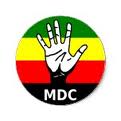The Kia
Pioneer Days
2011 was the 115th anniversary of the First Chimurenga (or Umvukela as it is known in Matabeleland). Throughout that year, the Zanj Financial Network 'Zfn', in Harare, Zimbabwe, prepared a number of historical reports briefing on this bloody uprising that resulted in much attritution and misery on both sides, some of which are reproduced here.
The second part of their briefing on the events of 1897 focuses once again on Matabeleland. More specifically, they explore what happened around Bulawayo as people streamed towards a place of safety and life behind the barricades. The story shifts towards the grim battles fought between March to May 1896 as each side struggled for mastery of the south and west of Zimbabwe. Finally they examine life in the other towns and forts of Matabeleland.
So what happened after the first murders?
In his report to the shareholders of the BSACo Earl Grey divided the course of the War of the Red Axe into four phases (BSACo 1898: 7-17):
- From the outbreak to the defeat of Captain Macfarlane on April 25
- From April 25 to the storming of Plumer's actions at Ntaba-zika-Mambo on July 5
- From July 5 to the First Indaba on August 21
- From the Indaba to the final disbandment of Plumer's column on October 22
Grey's account hides much drama, courage and brutality within its bland divisions and a more useful set of divisions are found later within his report where he talks of "The Laager", "Heavy Patrols," "The Matoppos" and "The Negotiations" give a better flavor of the ebb and flow of the fortunes of the white settlers in the country at this time. From being fearfully besieged to suing for peace with the Matabele as equals, the whites experienced a great deal of good luck during the course of the war that changed the course of history in this part of the world. Of course flexible strategy and tactics played their part as well as incidents of incredible bravery that are a mark of any military campaign but the intervention of serendipity cannot be discounted.
Okay but what happened?
As mentioned in the last briefing, Native Policemen were killed on March 20, followed by a general slaughter of whites from Monday March 23. On this day, Native Commissioner (NC) Bentley was shot by Godhlwayo's people, a group of whites massacred at Edkin's store (in middle Insiza) and isolated miners shot and stabbed to death. The False Dawn had broken (Richards 1974).nFrom around March 24, further murders took place over a wide area of the former Matabele kingdom, at Inyati, the Mambo Hills, along the upper Shangani and Vungu Rivers and along the Gwelo-Bulawayo road. Ransford (1968: 82) writes with the shocked horror of his generation about what they viewed as simple betrayal: "Many of the details of the outrages remain anonymous, there being no survivors but only a few mouldering corpses found weeks later to suggest the fearful deeds of darkness". More than 140 whites and unknown numbers of their servants, employees and "collaborators" - men women and children - were killed in the first week. Selous (1896: 32) remarks that "there is reason to believe that by the evening of the 30th not a white man was left alive in the outlying districts of Matabeleland". According to one eyewitness account, quoted in Cobbing's thesis (1976: 395), the murderers "were all jubilant and shouting they would have the country to themselves again".
How did the whites react?
The apparent spontaneity of the rising, the number and extent of the killings and the desperation of the Matabele to drive them out left the whites in their quickly fortified settlements stunned. Explanations were sought, most people seeking refuge in blaming supernatural events while others saw it purely as a revolt led by the Native Police. All failed to acknowledge the real grievances of the Matabele and consider the factors we discussed in the last briefing. Most whites retreated into the towns/forts of Bulawayo, Gwelo, Belingwe and Mangwe. There their forces were organized and it was immediately resolved to lead patrols with a threefold aim: to rescue survivors, obtain information on events and - vainly - to perhaps arrest or intimidate those responsible for the violence.
Sourced from the Zanj Financial Network 'Zfn', Harare, Zimbabwe, email briefing dated 28 March 2011



 South Devon Sound Radio
South Devon Sound Radio Museum of hp Calculators
Museum of hp Calculators Apollo Flight Journal
Apollo Flight Journal Apollo Lunar Surface Journal
Apollo Lunar Surface Journal Cloudy Nights Classic Telescopes
Cloudy Nights Classic Telescopes martini in the morning - The Lounge Sound
martini in the morning - The Lounge Sound The Savanna - Saffer Shops in London
The Savanna - Saffer Shops in London Linux Mint
Linux Mint
 Movement for Democratic Change
Movement for Democratic Change